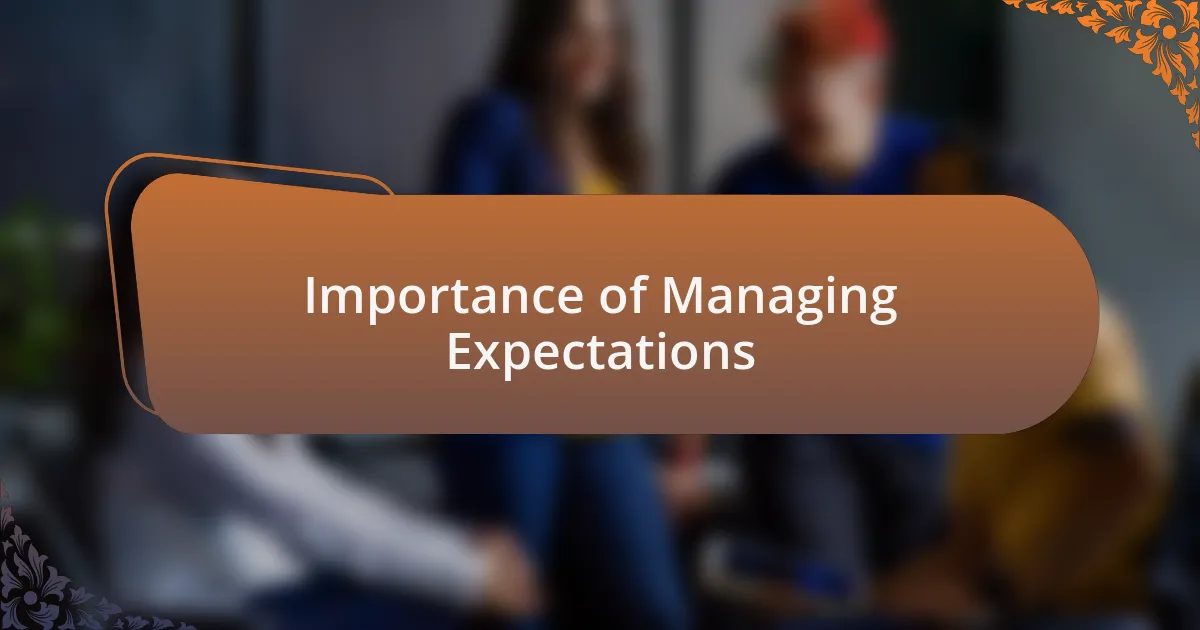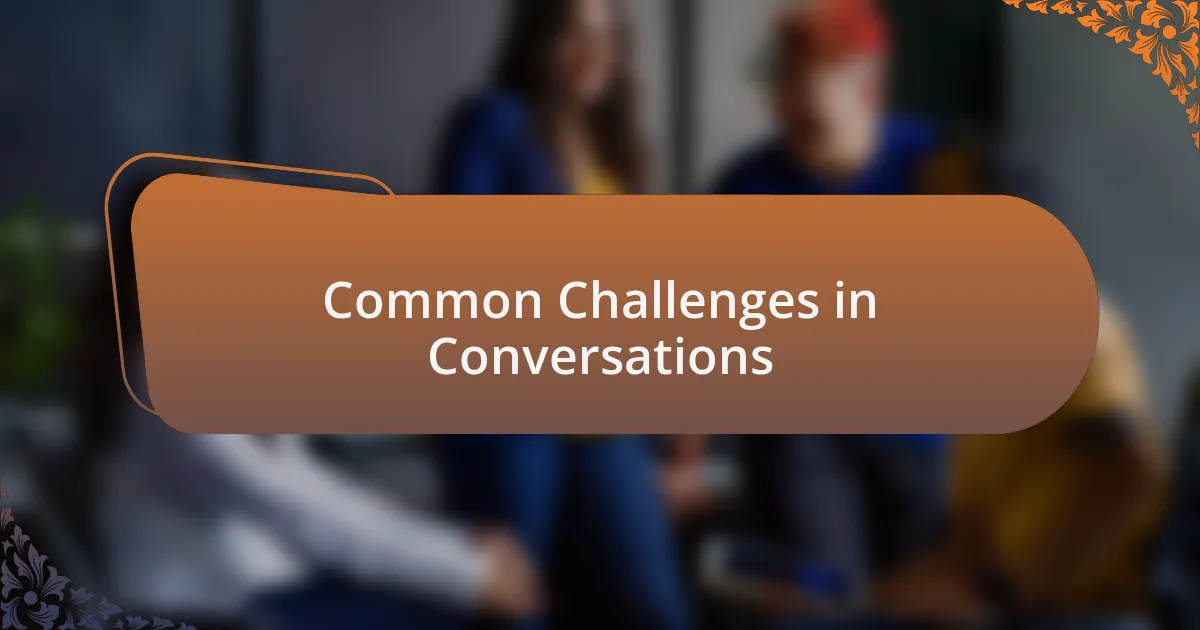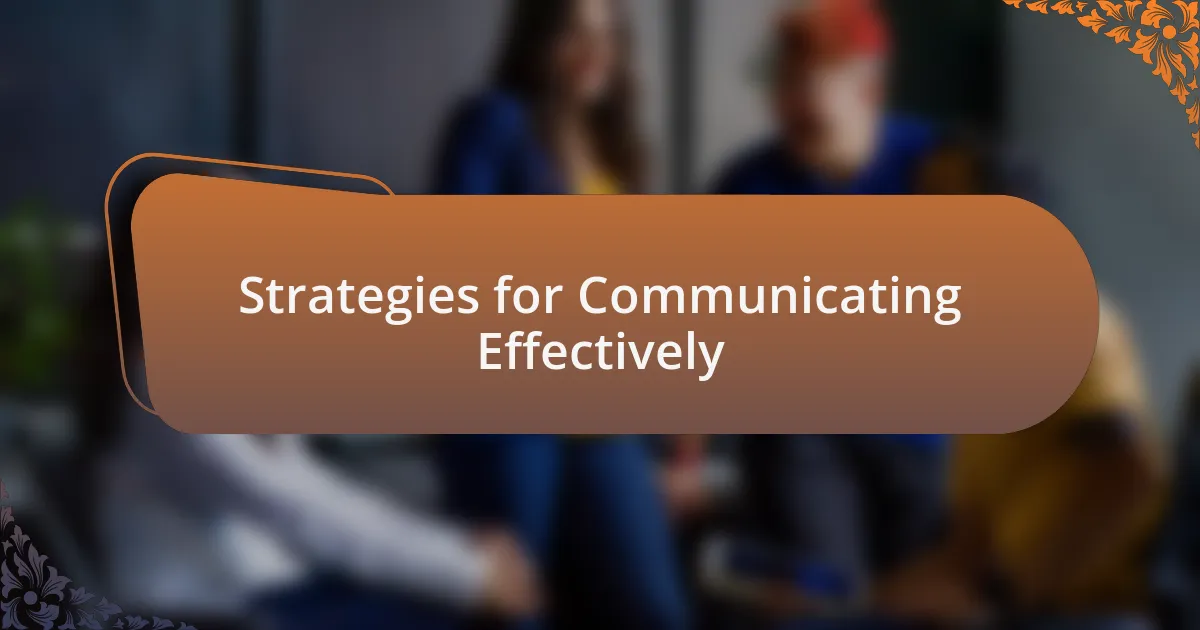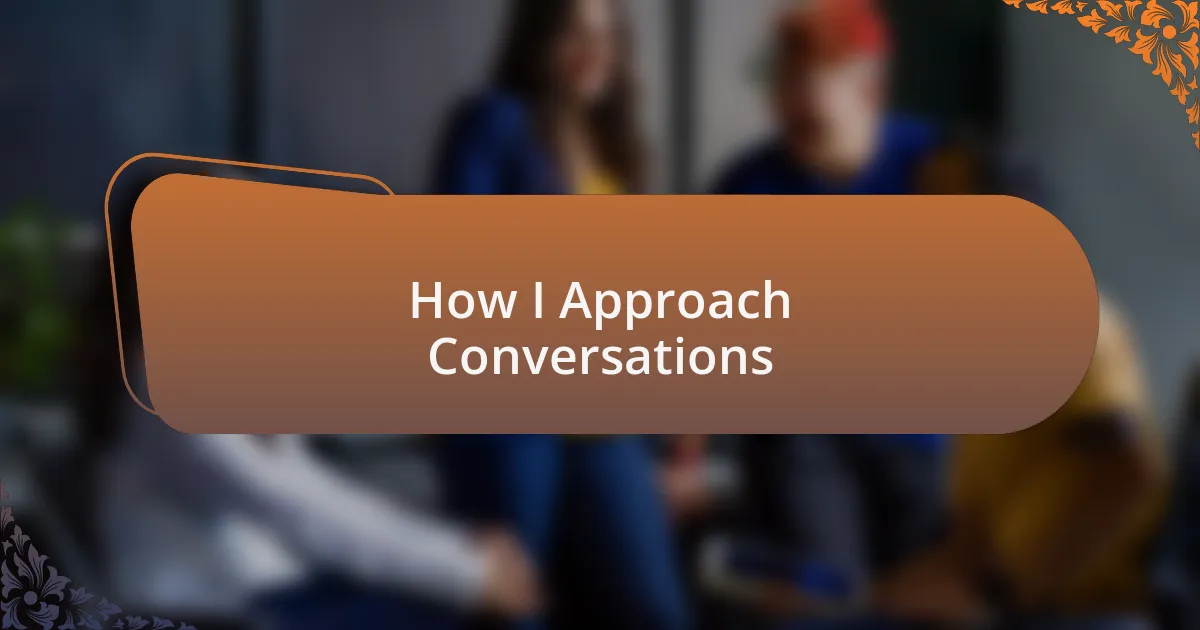Key takeaways:
- Selective Mutism is an anxiety disorder where individuals struggle to speak in social situations due to fear of judgment, leading to feelings of isolation.
- Managing expectations during conversations, such as accepting silence, can create a supportive environment and encourage alternative forms of communication.
- Creating comfortable settings and utilizing visual aids are effective strategies for facilitating communication with individuals experiencing selective mutism.
- Setting personal boundaries, both verbal and non-verbal, enhances understanding and trust during conversations.

Understanding Selective Mutism
Selective Mutism is a complex anxiety disorder that primarily affects children, making it incredibly challenging for them to speak in certain social situations, like the classroom or a gathering with peers. I remember seeing a child at my niece’s school, who would light up at home but turn entirely silent when surrounded by classmates. It raised a crucial question for me: How can such a vibrant personality be shut down by anxiety?
The fear of judgment or negative evaluation often paralyzes those with selective mutism, leading to feelings of isolation and frustration. I’ve witnessed firsthand how these emotions can cloud a child’s interactions. You might be wondering why some kids can chatter endlessly at home but seem mute outside. This contrast underscores the internal struggle they face daily—a battle between their desire to communicate and the anxiety that grips them.
Understanding selective mutism also involves recognizing that it is not a choice; it’s a condition driven by intense fear and anxiety. Imagine feeling trapped in your own silence, wanting to speak but feeling as though your voice is hidden away. That emotional turmoil can be overwhelming, leaving others puzzled about how to engage and support them effectively. It’s a reminder that empathy and patience are essential in conversations with those affected.

Importance of Managing Expectations
Managing expectations in conversations is crucial when communicating with someone who has selective mutism. I once participated in a group discussion that included a child with selective mutism. I quickly learned that expecting instant verbal responses might only heighten their anxiety. Instead, I opted for patience, waiting for the child’s comfort level to increase, which transformed our interactions into a supportive environment.
It’s important to recognize that not every attempt at conversation will yield a response. I recall a friend sharing her frustration when her child wouldn’t engage during playdates. We often assume that silence means rejection, but in reality, it can be a protective mechanism. Understanding this nurtures compassion and shifts our expectations towards accepting silence as part of the dialogue.
By managing our expectations, we not only alleviate pressure from the child but also foster healthier interactions. I’ve experienced how shifting focus away from the need for verbal affirmation can lead to other forms of communication, like smiles or gestures, which are equally meaningful. Isn’t it fascinating how, by adjusting our mindset, we can create a space where kids feel safe to express themselves, however that might look?

Common Challenges in Conversations
Conversations can often feel like navigating a minefield, especially when dealing with the unpredictability of responses. I remember feeling a rush of anxiety during a discussion with a teenager who had selective mutism. I was so focused on my words that I missed the subtle signs of discomfort in their body language. It became clear to me that sometimes the biggest challenge isn’t just silence—it’s ensuring that the atmosphere allows them to feel at ease.
Another challenge I encountered was the pressure of needing to fill silences. Early on in my journey, I found myself nervously trying to bridge gaps in conversation, often resulting in a frantic string of questions. This only pushed the individual further into their shell. I’ve learned that embracing the quiet can actually create a more inviting space for connection. Why is it so hard for us to accept that silence can be a powerful part of communication?
Moreover, the fear of misunderstanding can loom large. I had a friend whose child would respond with nods instead of words, which often left others guessing. I realized that expectations can shape not only conversations but also perceptions. We often forget that communication is not solely about exchanging words; it’s about forging connections. Understanding this has shifted my approach from seeking verbal confirmation to appreciating the nuances in each interaction.

Strategies for Communicating Effectively
Creating a comfortable environment is key to effective communication, especially with individuals who have selective mutism. I recall a time when I arranged a casual setting for a conversation, opting for a cozy café instead of a formal meeting room. This choice instantly calmed both of us, allowing for a more genuine connection. Isn’t it fascinating how the right environment can serve as a silent invitation to open up?
Another strategy I’ve found helpful is the use of visual aids. During one interaction, I introduced simple pictures to express feelings and choices, which encouraged the individual to communicate in their way. Observing the subtle shift when they pointed at a picture brought a smile to my face. How often do we overlook the power of visuals in bridging gaps in communication?
Patience remains a cornerstone of effective interaction. I once worked with a young girl who would take her time to respond, often leaving long pauses. Initially, these quiet moments felt uncomfortable for me, but I soon realized they were her way of processing. By gently waiting without rushing her, I learned to appreciate the depth of her thoughts. Have you ever considered how our willingness to be patient can transform a conversation from a struggle into a dance of understanding?

Techniques for Setting Personal Boundaries
Setting personal boundaries in conversations is essential for feeling secure and understood. One technique I’ve found effective is to verbalize my limits clearly. I remember a moment when I had to express to a friend that I needed more time to process my thoughts before responding. The relief in sharing that need not only eased my anxiety but also fostered a deeper respect in our dialogue. Have you ever contemplated how simply stating your needs can enhance trust in a relationship?
Another practical approach involves practicing “the pause.” I often allow a beat of silence after I share my thoughts. This pause grants me the space to gauge the other person’s reaction and adjust my response accordingly. In my experience, this technique has led to thoughtful discussions, as it encourages both parties to reflect on the conversation’s direction. Do you ever find that a moment of silence can speak volumes?
Moreover, setting non-verbal boundaries can be profoundly impactful. I recall a gathering where I subtly repositioned my body away from an overwhelming conversation when I felt uncomfortable. This physical cue clearly communicated my limit without needing to say a word. It’s remarkable how our body language can serve as a silent yet powerful tool in defining our personal space. Have you noticed how adjusting your posture can influence the dynamics of a conversation?

How I Approach Conversations
In approaching conversations, I emphasize the importance of active listening. I try to genuinely tune into what the other person is saying, which not only helps me to fully understand their perspective but also fosters a sense of connection. I’ve noticed that when I focus intently on my conversation partner, I feel less pressured to respond immediately, allowing me to engage more authentically.
I also find that setting a comfortable pace during conversations can alleviate my anxiety. For instance, I once had a chat with a colleague over coffee where I consciously slowed down the dialogue. This allowed both of us to delve deeper into our thoughts and express ourselves without the urgency of rushing through. Doesn’t it feel enriching when you can explore a topic more leisurely?
Additionally, I make an effort to be transparent about my feelings during discussions. There was a recent instance where I admitted feeling overwhelmed during a family gathering, which opened the door for everyone to share their own experiences. I believe that being honest about my emotions encourages others to be vulnerable as well. Isn’t it amazing how authenticity can enhance our conversations?